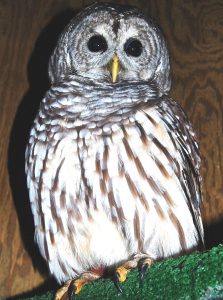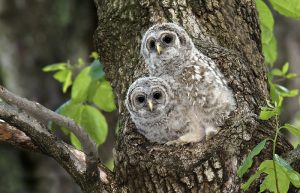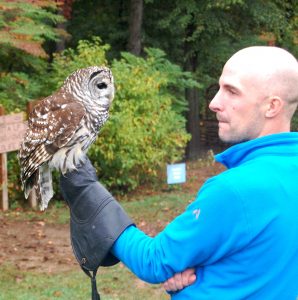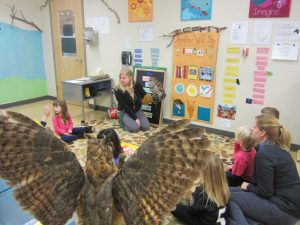Many of us are looking forward to the arrival of spring and all of the exciting natural changes that come with it; warming weather, flowers blooming and bird nests full of chirping babies!
Spring is the season of birth and renewal, but did you know that some of our local wildlife have already begun raising the next generation?
Despite the freezing temperatures and snow still on the ground, many of our native birds of prey have already been busy preparing their nests and breeding. Irvine has been lucky enough to host a few active nest sites in the past, including red-tailed hawks, great horned owls and barred owls!
- Irvine’s Barred Owl
- Chicks in a nest cavity
Unlike many large birds of prey that build massive tree-top nests, barred owls prefer to nest in cavities or holes found inside trees. Their breeding season can run from December until March, and a pair will mate for life. The eggs are laid over a period of days and will hatch after about a month of incubation.
Both parents provide care of the chicks; the female provides warmth and safety in the nest, while the male hunts and provides food. After growing for about six weeks the chicks will learn to fly, but they will still receive parental care for another six months before heading out into the world on their own.
Visitors to Irvine can enjoy an up close look at the elusive barred owl at our outdoor aviary. This bird came to Irvine in 2003 as an “imprinted” bird, meaning it was raised by humans and never truly learned how to survive on its own. Due to it’s nocturnal nature, the best time to view it is late in the afternoon (the normal feeding time).
- Naturalist Steve with Irvine’s barred owl
- Irvine’s barred owl visiting the preschool with Naturalist Laura




